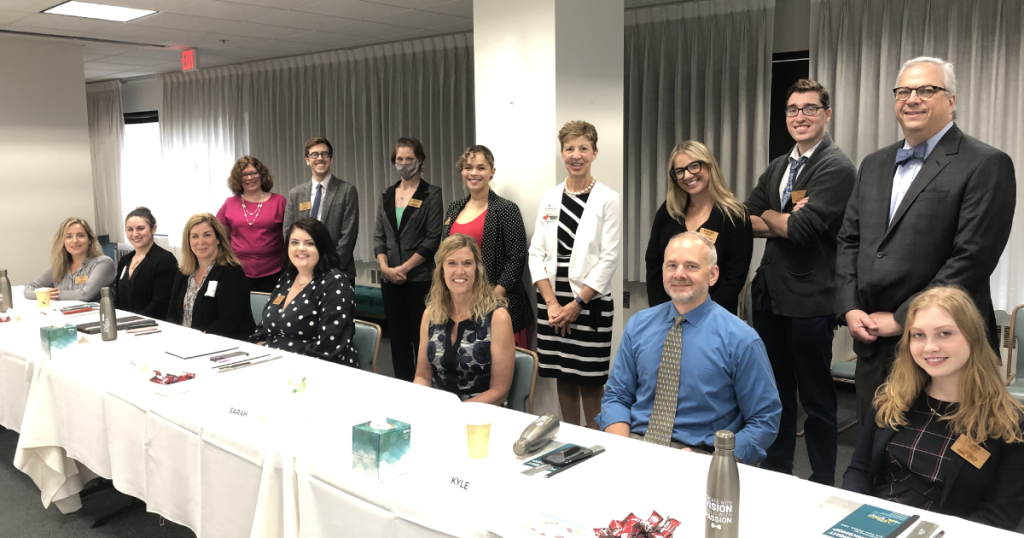How Associations Can Get a Leg Up On The Future
Oct 18, 2021

What does it mean to have foresight? In general terms, we all can agree that foresight is the ability to look ahead. No one can predict the future, but with strategic direction, creative thinking, and collaboration with the right partners, foresight can help us plan for and achieve the future we’d like to see.
The Markens Group was lucky enough to have an expert in our industry, Sue Pine, conduct a foresight workshop for us this past summer. Sue is a Certified Association Executive (CAE) and a Fellow of the American Society of Association Executives (ASAE). Sue is also an ASAE trained facilitator and a strategic advisor team member of Bloch Reed Strategic Advisors, a company that focuses on offering professional services that help association leaders affect change within their organizations.
Sue opened our minds to think outside of the usual 12-month lifecycle of strategic planning and allowed us to envision what the next seven to ten years might look like for our association clients. In our workshop, we not only evaluated how foresight planning will impact our industry, but more importantly, we assessed how these social, cultural, economic, and data changes will affect our world.
The Process and Value of Foresight
First, what is foresight? According to ASAE, it is “a systematic, multi-stepped process for discerning, analyzing, and acting on potential futures.” The process of foresight involves framing the project at hand, scanning the environment for trends, envisioning futures—including your preferred future, creating a plan to achieve the vision, and executing it.
After breaking down the concept of foresight for us, Sue discussed the value. Associations and other organizations can use the process of foresight to:
- Support strategic planning and strategy development
- Inform anticipatory learning
- Inform risk analysis
- Inspire innovation and business development
Environmental Scanning and Drivers of Change
Environmental scanning is crucial to the foresight process. What is happening now, and what might happen tomorrow, to shape the future? Sue introduced us to research from ASAE that identifies key drivers of change each year. Simply put, a driver of change is a group of trends that enact difference. Examples of drivers of change in 2021 are changing science, evolving cities, dismantling systemic racism, American instability, and adapting to a world reshaped by COVID. Here are descriptions of drivers of change that may affect membership and demographics in the future.
What’s important to remember is that, with this evidence-based research, implementing foresight does not require a crystal ball to see into the future. Drivers of change help facilitate foresight by becoming catalysts for conversation among different voices and diverse perspectives. Through such conversation and collaboration, associations can develop a vision for a future they’d like to achieve.
Why Associations Need Foresight
During our workshop, Sue reminded us why people join associations in the first place – to receive the most current and relevant information on their desired topic, industry, or subject matter. When introducing the idea of foresight, it’s important to reiterate that it’s often the spark that leads to thinking about the possible, and in turn, allows associations to evolve while still serving as the central place members can go to receive the latest and greatest information about their industry.
As much as we want to create actionable plans, it’s important to remember that sometimes just introducing the changing environment and initiating conversations can help with engagement and allow you to anticipate the future without having to immediately act on it. For example, by creating a strategic task force dedicated to planning the future of an association (i.e., a task force called Pathway to 2030), you’re giving members the opportunity to join in on the dialogue while putting them at ease because it’s a temporary group that’s working towards a common goal, no matter how far in the future the goal may be accomplished.
ASAE has found that association leaders will need to be nimble, innovative, forward-thinking, and empathetic in a world reshaped by 2020. When facing an uncertain future, Sue recommends being prepared for multiple possible futures through the practice of foresight. By refreshing continuity plans, policies, and procedures you will help mitigate risk; by developing flexibility and agility in your operations and governance, you will help assure sustainability. Overall, I think most will agree that flexibility, agility, and sustainability are promising traits of a future that’s worth working toward.
To learn more about the importance of foresight for your association, visit ASAE ForesightWorks and receive a stream of intelligence about anticipated trends, tools to help use the strategic intelligence in your work, and opportunities to engage members.